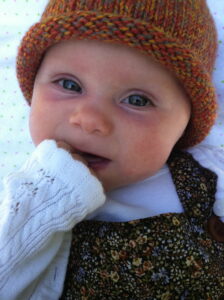 This is a re-print of the handout I give to people who attend my ongoing special class, called Working with Babies.
This is a re-print of the handout I give to people who attend my ongoing special class, called Working with Babies.
In general, the attendees are students or graduates of our professional trainings in Biodynamic Craniosacral Therapy. But the particular skills I explain below are invaluable for anyone who comes in contact with infants, including moms and dads, midwives, doulas, and other birth and pediatric caregivers.
Because these are unique skills, adapted from Biodynamic skills, they are explained using some unique concepts and languaging. 1-2 times a year I offer the opportunity to learn these skills in greater depth, in a class called Introduction to Biodynamic Skills. If you have any questions, feel free to email me at gary.peterson@starinstitute.us for clarification or for class dates.
• Find and settle into your own midline. Drop down your midline into your belly or upper pelvis. Let yourself widen from that point into the biosphere (fluid body), become fluid, and become quiet and still within yourself.
• Remember that there is an intelligence at work that is far greater than your mentality. Let that intelligence express itself as Inherent Health, and guide the session.
• WHEN YOU PHYSICALLY APPROACH A BABY, BE INVITED IN. WAIT ON THE PERIPHERY UNTIL YOU SENSE THAT THE BABY CAN RECEIVE YOU, ENERGETICALLY AND EMOTIONALLY.
LET THEM COME TO YOU, RATHER THAN YOU MOVING IN ON THEM.• Acknowledge the essential nature of the little ones. Welcome them to the world and thank them for bringing their gifts, being our teachers, helping us remember and understand what it is to be human.
• Listen with empathy and neutrality to the little ones’ story. Listen in THEIR language, the language of body sensations, sounds, facial expressions, eye contact, etc.
• Adjust your pacing to the pacing of the little one you are working with. SLOW IT DOWN. Be in mid-tide or long-tide (the natural rhythms of babies). Modulate yourself to their speed and tempo. However, if you slow down into long tide, keep a clear sensate relationship to the biosphere (the edges of your body), rather than widening out to the horizon. The biosphere provides a container that can hold the baby in a more grounded way. If you widen to the horizon, you lose that container and the baby can feel very lost and amorphous.
• Remember that the baby, until she is about age 2, is mostly undifferentiated from her environment. She doesn’t know herself to be different from everything around her, including other people and their physical, mental and emotional fields. Provide differentiation whenever possible by naming things that are happening in the field, and differentiating baby from those things. Example: I just got distracted by a noise in the other room, and I energetically left for a moment. That was about me, it wasn’t about you. Now I’m back with you with my attention.
• Because babies are undifferentiated, their surround (environment) is very much a part of them. THIS MEANS THAT WHEN YOU ARE WORKING WITH THE BABY, YOU ARE WORKING WITH THE WHOLE FAMILY. WHATEVER IS UNRESOLVED IN THE FAMILY FIELD CAN AFFECT THE BABY. PAY ATTENTION TO THE WHOLE AND LISTEN FOR WHERE THERE IS INCOHERENCE AND STRESS IN THE FAMILY FIELD.
• On a regular basis, check in with yourself to take a breath and re-settle. The more you can remain settled and neutral, the more coherence will come into the field and help settle the baby.
• Stay present, work in PRESENT TIME. Whatever happened, even traumas at birth, are ONLY expressing in present time
